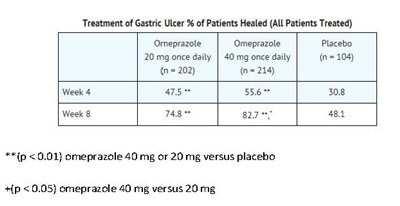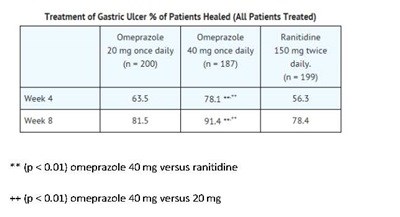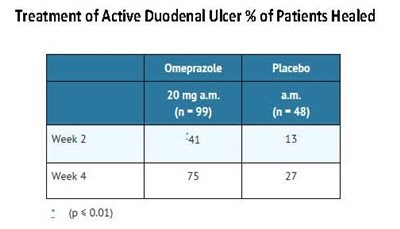Product Images Previdolrx Analgesic Pak
View Photos of Packaging, Labels & Appearance
- Diclofenac Chem Structure - Diclofenac Sodium 1
- Diclofenac Label - Diclofenac label
- Diclofenac table 1 - Diclofenac table 1
- Diclofenac table 2 - Diclofenac table 2
- Diclofenac table 3 - Diclofenac table 3
- Omeprazole table 2 - Omeprazole table 2
- Omeprazole product label - Omeprazole product label
- Omeprazole table 1 - Omeprazole table 1
- Omeprazole table 10 - Omeprazole table 10
- Omeprazole table 11 - Omeprazole table 11
- Omeprazole table 12 - Omeprazole table 12
- Omeprazole table 13 - Omeprazole table 13
- Omeprazole table 14 - Omeprazole table 14
- Omeprazole table 15 - Omeprazole table 15
- Omeprazole table 16 - Omeprazole table 16
- Omeprazole table 17 - Omeprazole table 17
- Omeprazole table 18 - Omeprazole table 18
- Omeprazole table 19 - Omeprazole table 19
- Omeprazole table 3 - Omeprazole table 3
- Omeprazole table 4 - Omeprazole table 4
- Omeprazole table 5 - Omeprazole table 5
- Omeprazole table 6 - Omeprazole table 6
- Omeprazole table 7 - Omeprazole table 7
- Omeprazole table 8 - Omeprazole table 8
- Omeprazole table 9 - Omeprazole table 9
- PrevidolRx product label - PrevidolRx
- Trixaicin product label - Trixaicin product label
Product Label Images
The following 27 images provide visual information about the product associated with Previdolrx Analgesic Pak NDC 75840-094 by Genpak Solutions, Llc, such as packaging, labeling, and the appearance of the drug itself. This resource could be helpful for medical professionals, pharmacists, and patients seeking to verify medication information and ensure they have the correct product.
Diclofenac table 1 - Diclofenac table 1

Table 1 shows pharmacokinetic parameters for the drug Diclofenac in normal healthy adults between the ages of 20-48 years. The table includes the mean values and coefficients of variation for parameters such as absolute bioavailability, oral clearance, renal clearance, apparent volume of distribution, and terminal half-life.*
Diclofenac table 2 - Diclofenac table 2

This text provides a list of potential serious and other side effects of a medication, including heart attack, stroke, high blood pressure, heart failure, kidney problems/failure, bleeding and ulcers in the stomach/intestines, low red blood cells, life-threatening skin and allergic reactions, liver problems/failure, asthma attacks in people who have asthma, as well as stomach pain, constipation, diarrhea, heartburn, nausea, vomiting, and dizziness as additional potential side effects.*
Omeprazole table 2 - Omeprazole table 2

The text "10<20kg" indicates that the weight is between 10 and 20 kilograms. The text "220 kg" indicates a weight of 220 kilograms. It is not clear if these weights are related or if they refer to different objects. Therefore, no useful description can be generated based on this text.*
Omeprazole table 1 - Omeprazole table 1

The text describes the dosage and administration instructions for Omeprazole, a medicine used to treat several conditions. The recommended dose for adults is 20mg per day, with some patients requiring an additional 4 weeks. Trile therapy and dual therapy are recommended for H. pylori eradication. The text provides dosage instructions separately for gastric ulcer, GERD, and maintenance of healing of erosive esophagitis. The text also mentions the recommended dosage for pediatric patients, based on their weight.*
Omeprazole table 10 - Omeprazole table 10

This text is discussing a treatment for active duodenal ulcers that has not been tested. The treatment involves the use of ranitidine at a dose of 150mg twice per day. The rest of the text is not readable.*
Omeprazole table 14 - Omeprazole table 14

Treatment of Gastroesophageal Reflux Disease (GERD) in patients with a Great Impact on their quality of life was evaluated using either Omeprazole or Placebo. Patients took 40mg or 20mg of Omeprazole daily or a placebo, for weeks. The results showed that the use of Omeprazole at both dosages was more effective in reducing GERD symptoms than the placebo. There was also an indication that 40mg of Omeprazole was even more effective than 20mg.*
Omeprazole table 15 - Omeprazole table 15

This is a description of a treatment for gastric ulcers in patients who were treated with Omeprazole or Ranitidine. The treatment was administered in dosages of 20mg once a day, 40mg once a day, and 150mg. The results indicate that the efficacy of Omeprazole, either at 40mg or 20mg, is superior to that of Ranitidine.*
Omeprazole table 17 - Omeprazole table 17

This appears to be a table or chart showing the results of a study involving a 20mg dose of omeprazole compared to a placebo. The table includes the number of participants in each group and a statistical comparison indicating that the omeprazole group performed significantly better than the placebo group.*
Omeprazole table 19 - Omeprazole table 19

This appears to be a comparison of different doses and medications for the treatment of acid reflux. Specifically, it compares the effectiveness of taking omeprazole (in doses of 10mg or 20mg once daily) versus taking ranitidine. The study found that omeprazole in both doses was more effective than ranitidine, with the higher dose being more effective than the lower dose.*
Omeprazole table 4 - Omeprazole table 4

This appears to be a table summarizing the anti-secretory effects of Omeprazole, a medication used to decrease stomach acid, from multiple studies after administering twice daily dosages. The table shows the range of values for % decrease in peak acid output and % decrease in 24-hour intragastric acidity. It also notes that the data is from single studies.*
Omeprazole table 5 - Omeprazole table 5

The text describes a table showing the tissue concentrations of Clarithromycin, a medication used to treat infections, two hours after dosage. The table differentiates between tissue concentrations for Clarithromycin alone and Clarithromycin with Omeprazole, in three different areas of the stomach - the Antrum, Fundus, and Mucus. However, due to errors, some numbers and characters are not readable, making interpretation more difficult.*
Omeprazole table 7 - Omeprazole table 7

The text appears to be a report on the results of antibiotic susceptibility testing on bacteria, specifically one called pylri. The report includes data on the effectiveness of different antibiotic therapies including dual and triple therapy treatments using several types of antibiotics. There are also tables showing the results of post-treatment tests on the bacteria.*
Omeprazole table 8 - Omeprazole table 8

This is a chart that shows the percentage of patients healed from active duodenal ulcer after treatment with either a placebo or 20mgam medication as morning dosage. The chart indicates that after 2 weeks, none of the placebo patients were healed, while a specific percentage of patients taking the medication were healed. It also shows that by week 4, 75% of patients taking the medication were healed, while only 2% of patients taking the placebo were healed. The symbol "<001" indicates that the difference between the two groups is statistically significant.*
Omeprazole table 9 - Omeprazole table 9

This is data showing the effectiveness of two medications, Omeprazole and Ranitidine, in treating active duodenal ulcer. The number of patients healed is represented as a percentage and monitored over a 4-week period. The sample size for Omeprazole is 145 and the dosing is 150mg twice daily, while the details for Ranitidine are not given. The data suggests that Omeprazole is significantly more effective than Ranitidine in healing duodenal ulcers.*
Trixaicin product label - Trixaicin product label

This is a product label for Trixaicin, a topical analgesic cream that contains 0.025% Capsaicin. The net weight of the product is 60 g and it is manufactured by Qualitest. The label also includes a contact number for customer support.*
* The product label images have been analyzed using a combination of traditional computing and machine learning techniques. It should be noted that the descriptions provided may not be entirely accurate as they are experimental in nature. Use the information in this page at your own discretion and risk.











